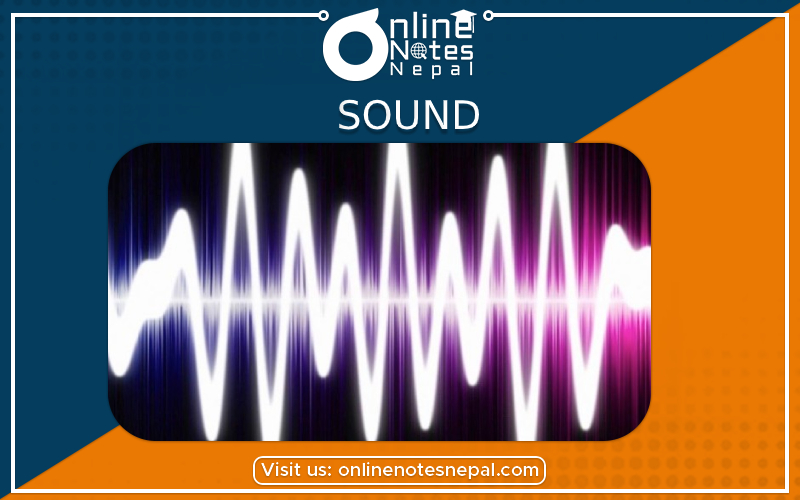Published by: Nuru
Published date: 02 Dec 2021

In this chapter sound, we discuss about definition of sound, sound wave, reflection of sound, application of echo, reverberations, and numerical under Grade 8.
Sound is a form of energy which produces a sensation of hearing in our ears.
OR
Sound is a vibration that travels through the air or anothe r medium and can be heard when they reach in a person's or animal's ear. The sound is produced by rapid to and fro movements, called vibrations.
Sound Wave:
Sound wave is the mechanical wave which needs material medium to propagate. Propagation of sound takes place through compression and rarefaction. It shows the properties of reflection, refraction diffraction and interference.
It is also a periodic disturbance which travles through a medium transferring energy from one point to another without causing any permanent displacement of the medium. A sound is produced by vibrating bodies. The vibration causes the surrounding air molecules to vibrate also producing a disturbance of the air.
Frequency (f): The number of complete waves sets up in a medium in one second is called frequency. It's SI unit is Hertz (hz).
Time Perid (T): The time taken by the wave to complete one cycle or a complete wave is called the time period. It's SI unit is second.
Wavelength( λ ): The distance between two consecutive troughs or crests in a transverse wave is called wavelength. It is also defined as the distance between the two consecutive compressions or rarefactions in a longitudinal wave.
λ = v / f
Factors influencing the velocity of sound are:
When the sound wave strike on the rigid surface a part of it is absorbed and a rest is reflected back is called reflection of sound. It follows the laws of reflection. Sound can be reflected from walls of big building, hills or row of trees.
Refraction of sound waves
Sound waves also follow the property of refraction. Sound travels in a constant speed in a uniform medium. When the medium is not uniform, it changes its speed. Because of the temperature there is no uniformity in the air medium at different layers. So, the bending of sound wave in a layer of different temperature is called refraction.
Echo is simply, the reflection of sound by a hill or building some distance away. The minimum distance for a echo to heard is 17 m.
the principle of reflection of sound is used as an instrument called SONAR which is used to find the depth of the sea at any time. A SONAR produces ultrasonic pulses which are sent down into the sea from a ship, they are received back after being reflected by the bottom of the sea. SONAR stands for Sound Navigation And Ranging.
Sound waves cannot propagate in vacuum:
"Sound waves cannot propagate in vacuum". It means that the sound waves cannot travel through vacuum. It is because the sound wave is a mechanical wave and mechanical wave need a material medium for propagation. So, sound waves cannot travel through vacuum.
Absorption of sound:
When sound falls on a surface, it is parly reflected and partly absorbed. Walls of a room are good relectors of sound. Woods, carpets, curtains, clothes and our bodies also absorb sounds.
Reverberations:
If there are a number of reflecting surfaces near one another, a series of reflection takes place, such sound is called reverberation.
Numerical:
An Echo is heard after 0.1s when a man shouts near the mouth of the deep well. What is the distance between the man and the surface of water in the well?
Solution,
Speed of sound (v) = 332 m/s
Time taken for hearing the echo (t) = 0.1 s
Distance travelled by the sound = v x t = 332 x 0.1 = 33.2
Distance between cliff and person = 33/2 = 16.6 m
Thus, the distance between the cliff and person is 16.6 m